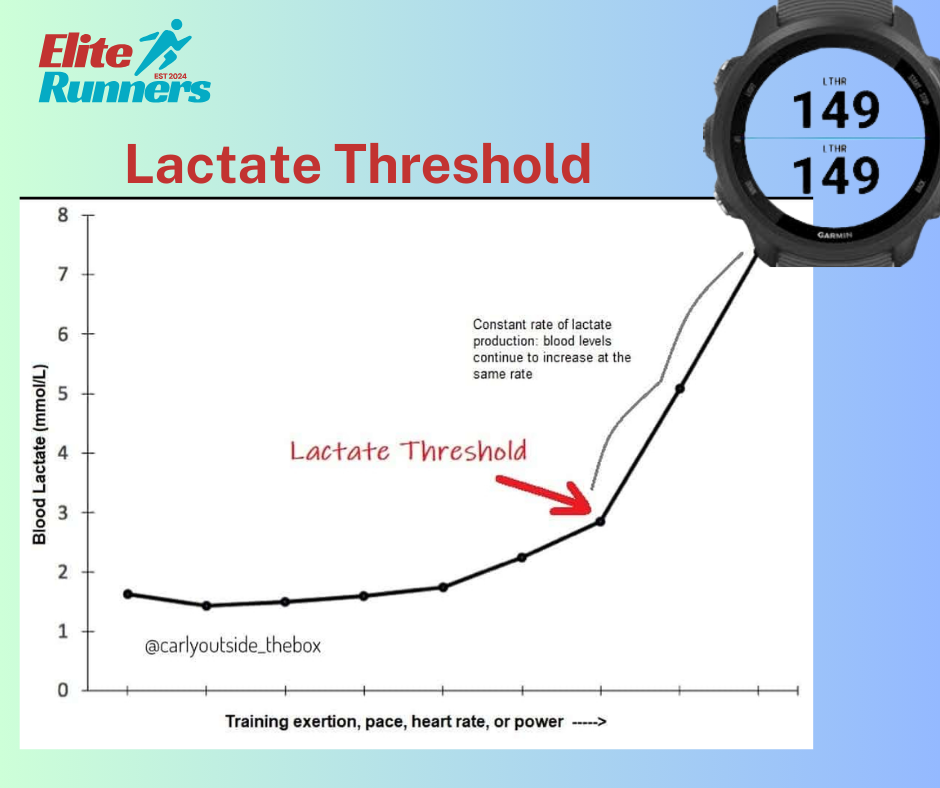Marathon running is a test of endurance, strategy, and physiological efficiency. Among the many factors that influence performance, the lactate threshold stands out as a critical determinant of success.
Understanding what lactate threshold is, how it impacts marathon running, and how to improve it can make a significant difference in your performance. This article will delve into the science behind lactate threshold, its significance in marathon running, methods to measure it, and strategies to enhance it.
What is Lactate Threshold?
The Science behind Lactate Threshold

Lactate threshold, often referred to as anaerobic threshold, is the exercise intensity at which lactate starts to accumulate in the bloodstream faster than it can be removed.
During exercise, your muscles produce lactate as a byproduct of anaerobic metabolism. At lower intensities, your body efficiently clears lactate, but as intensity increases, lactate production outpaces clearance, leading to a build-up.
This point of accumulation is crucial because it marks the transition from predominantly aerobic to anaerobic energy production.
Beyond this threshold, fatigue sets in more rapidly, and performance can decline.
Lactate Threshold vs. VO2 Max
While VO2 max (the maximum amount of oxygen your body can utilize during intense exercise) is often highlighted as a key performance metric, lactate threshold is arguably more significant for endurance events like marathon running. VO2 max represents your aerobic capacity, but lactate threshold indicates how efficiently you can sustain a high percentage of that capacity over time.
For instance, two runners might have the same VO2 max, but the one with a higher lactate threshold can sustain a faster pace before fatigue sets in.
Therefore, improving your lactate threshold can have a more direct impact on your marathon performance than increasing your VO2 max alone.
The Significance of Lactate Threshold in Marathon Running
Endurance and Efficiency
In marathon running, the ability to sustain a high percentage of your VO2 max over an extended period is crucial.
A higher lactate threshold allows you to maintain a faster pace without accumulating excessive lactate, which can lead to muscle fatigue and decreased performance.
Heart Rate Zones and Pacing
Understanding your lactate threshold can also help you optimize your heart rate zones during training and racing. By training at or just below your lactate threshold, you can improve your body’s ability to clear lactate and utilize oxygen more efficiently.
This knowledge allows you to pace yourself effectively during a marathon, ensuring that you don’t start too fast and hit the dreaded “wall” later in the race.
How to Measure Lactate Threshold
Laboratory Testing
The most accurate way to measure your lactate threshold is through laboratory testing. This typically involves a graded exercise test on a treadmill or stationary bike, where your blood lactate levels are measured at increasing intensities. The point at which lactate levels begin to rise exponentially is identified as your lactate threshold.
Field Tests
For those who don’t have access to a lab, field tests can provide a good estimate of your lactate threshold. One common method is the 30-minute time trial.
After a warm-up, you run at the highest pace you can sustain for 30 minutes. Your average heart rate during the last 20 minutes of the test is a good approximation of your lactate threshold heart rate.
Wearable Technology
Modern wearable technology, such as heart rate monitors and GPS watches, can also help estimate your lactate threshold.
Many devices offer features that analyze your heart rate data during workouts to estimate your threshold. While not as precise as lab testing, these tools can provide valuable insights for training.
This is why running watch is part of the gear needed for road running.
How to Improve Lactate Threshold
Specific Training Workouts
Improving your lactate threshold requires targeted training that pushes your body to adapt to higher intensities. Here are some effective workouts:
Tempo Runs
Tempo runs are sustained efforts at or just below your lactate threshold pace.
These runs typically last 20-40 minutes and help your body become more efficient at clearing lactate. For example, if your lactate threshold pace is 7:00 per mile, a 30-minute tempo run at this pace would be an effective workout.
Interval Training
Interval training involves alternating periods of high-intensity effort with recovery. For lactate threshold improvement, intervals should be run at or slightly above your threshold pace.
A common workout might be 5 x 1-kilometer repeats at lactate threshold pace with 2-3 minutes of rest between intervals.
Long Runs with Surges
Incorporating surges into your long runs can also help improve your lactate threshold.
During a long run, periodically increase your pace to just below your threshold for 5-10 minutes before returning to your normal long-run pace.
This simulates the varying intensities you might encounter during a marathon.
Strength Training
Strength training, particularly for the lower body, can enhance your running economy and delay the onset of fatigue.
Exercises like squats, lunges, and deadlifts build muscle strength, allowing you to maintain a higher pace with less effort.
Nutrition and Recovery
Proper nutrition and recovery are essential for improving your lactate threshold.
Consuming a balanced diet rich in carbohydrates, proteins, and healthy fats supports muscle repair and energy production.
Additionally, adequate sleep and active recovery techniques, such as foam rolling and stretching, help your body adapt to training stress.
Conclusion
The lactate threshold is a pivotal factor in marathon running, influencing your ability to sustain a high pace over long distances.
By understanding and improving your lactate threshold, you can enhance your endurance, optimize your heart rate zones, and ultimately achieve better race performances.
This is one of the metrics that elite runners like Eliud Kipchoge use in their training for breaking world records.
Whether through specific training workouts, strength training, or proper nutrition, there are numerous ways to elevate your lactate threshold and unlock your full potential as a marathon runner.
So, lace up your shoes, hit the road, and start pushing your limits—your next personal best awaits!


